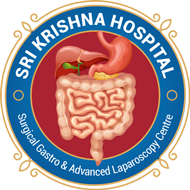What is Anal Fistula?
An anal fistula is a small tunnel that develops between the end of the bowel and the skin near the anus (where poo leaves the body).
They're usually the result of an infection near the anus causing a collection of pus (abscess) in the nearby tissue
Why Anal Fistulas occur ?
Most anal fistulas develop after an anal abscess. You can get one if the abscess does not heal properly after the pus has drained away.
Less common causes of anal fistulas include:
- Crohn's disease – a long-term condition in which the digestive system becomes inflamed
- diverticulitis – infection of the small pouches that can stick out of the side of the large intestine (colon)
- hidradenitis suppurativa – a long-term skin condition that causes abscesses and scarring
- infection with tuberculosis (TB) or HIV
- a complication of surgery near the anus
symptoms of an anal fistula can include:
- skin irritation around the anus
- a constant, throbbing pain that may be worse when you sit down, move around, poo or cough
- smelly discharge from near your anus
- passing pus or blood when you poo
- swelling and redness around your anus and a high temperature (fever) if you also have an abscess
- difficulty controlling bowel movements (bowel incontinence) in some cases The end of the fistula might be visible as a hole in the skin near your anus, although this may be difficult for you to see yourself.
How Anal Fistula Surgeryis done ?
Surgery is almost always necessary to cure an anal fistula. The surgery is performed by a colon and rectal surgeon. The goal of the surgery is a balance between getting rid of the fistula while protecting the anal sphincter muscles, which could cause incontinence if damaged.
Fistulas in which there is no or little sphincter muscle involved are treated with a fistulotomy. In this procedure, the skin and muscle over the tunnel are cut open to convert it from a tunnel to an open groove. This allows the fistula tract to heal from the bottom up.
In the case of a more complex fistula, place a special drain called a seton, which remains in place for at least 6 weeks. After a seton is placed, a second operation is almost always performed:
- A fistulotomy, or
- An advancement flap procedure (the fistula is covered with a flap, or piece of tissue, taken from the rectum, like a trap door), or
- A lift procedure (the skin above the fistula is opened up, the sphincter muscles are spread, and the fistula is tied off).
A new treatment for Crohn’s disease fistulas is to inject stem cells into the fistula.
Fistula surgery is usually done on an outpatient basis, which means the patient can go home the same day. Patients who have very large or deep fistula tunnels may have to stay in the hospital for a short time after the surgery. Some fistulas may require several operations to get rid of the fistula.
Post operative recovery
Most fistulas respond well to surgery. After the surgery, may recommend that you soak the affected area in a warm bath, known as a sitz bath, and that you take stool softeners or laxatives for a week.
Since you may also have some pain or discomfort in the area after surgery, If the abscess and fistula are treated properly and heal, they will probably not come back.
Advantages of Anal Fistula Surgeries
The major benefits of undergoing anal fistula surgery include:
As the procedure is 30 minutes long so you will be given discharge on the probably the same day. Hence, overnight hospital stay cost is eliminated.
The operation is found to be most successful as it can heal the fistula completely and may prevent other infections.





